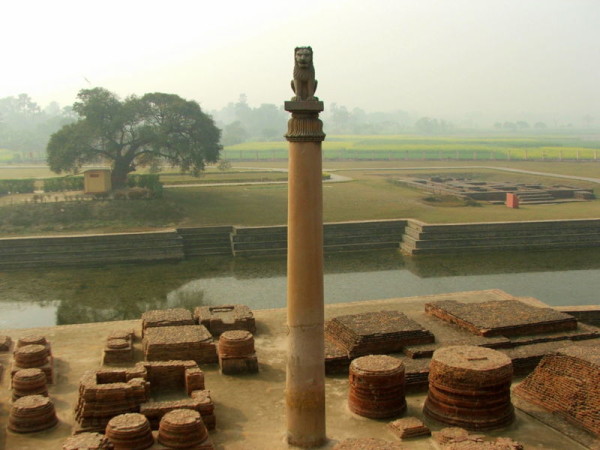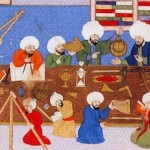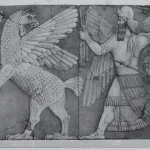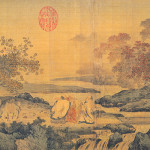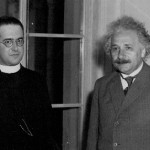The Stillbirth of Science in India
by Dr. Stacy Trasancos
Filed under Christianity and Science
NOTE: Today we continue our weekly series of essays by Dr. Stacy Trasancos on the "stillbirths" of science. They're based on Fr. Stanley L. Jaki's research into the theological history of science in the ancient cultures of Egypt, China, India, Babylon, Greece, and Arabia. See past articles here.
The decimal system and notation developed in ancient India between the fourth and seventh centuries represents “the most noteworthy single contribution of ancient India to science and its importance cannot be overstated.” (Science and Creation, 13-14) Without the decimal system in the Late Middle Ages, the more cumbersome Roman numeral system would have been used and it would have delayed the birth of science in the seventeenth century Christian West. The ancient Indians also built houses out of brick and constructed drainage facilities. There is evidence that they used copper and bronze and made glass.
Advanced technological skill dating back to the third century B.C. and “still unexplained today” is evidenced in the non-rusting pillars erected by King Ashoka during his reign. They certainly remain a monument to progress in metallurgy, stone-cutting, and transportation engineering. (Savior of Science, 27) The world-famous monuments of the Iron Pillar of Delhi and Sultanganj and copper colossus of Buddha also provide evidence of advanced metallurgy. There was also a lively interest in industrial arts from the third century B.C. in the writing of Kantilya’s Arthasastra, which articulates the business of government and legislation, the construction of ships, buildings, and roads, and the development of husbandry, agriculture, land surveying, mining, and medicine.
Jaki noted that “practicality, craftsmanship, and organizational talent do not, however, qualify as science.” (Science and Creation, 14) There was no theoretical generalization leading to the formulation of physical laws and systems of laws. The claim that science originated in India is also difficult for anyone to make because there are so many doubts about historical sources. This lack of chronology was noted by Needham, a leading historian of not just Chinese, but all Oriental science. He warned that reliable dating of ancient records was necessary for objective analysis of history, and he admitted “the extreme uncertainties in the dating of the most important texts and even of actual objects which have survived” among what is known of Indian history.
Much debate still wages over Needham’s infamous question regarding “the failure of China and India to give rise to distinctively modern science while being ahead of Europe for fourteen previous centuries.” (Joseph Needham, Science and the Crossroads, Foreword) While acknowledging that the Scientific Revolution was “part of a European miracle,” Indian scholars have offered explanations that perhaps India experienced a “mathematical revolution” called “computational positivism” instead. The Indian approach, according to this theory, showed a “deep and studied distrust of axioms and physical models,” while Europe “achieved unreasonably and unexpectedly spectacular successes in science.” (Roddam Narasimha, “The Indian half of Needham’s question")
Other theories have suggested the ability to grasp logical contradictions and “contempt for mundane reality” as a cause for the lack of science in India, while others suggest the cultural stability of agricultural societies with no new challenges to create new knowledge to solve problems. Yet others have alleged that Indian culture was “otherworldly” and perceived the physical world as an illusion and the liberation of the soul more important than the study of the external world. Still others have claimed that since there was no conflict between religion and science in India, and since atheists were not persecuted, this lack of tension is at fault for complacency about science in India; while others have faulted instead the colonialism of the West, and speculated that the “European miracle” would not have happened if it were not for the mathematical contributions of India. (Agrawal and Kendra, “The Needham Question: Some Answers")
Roddam Narasimha, Indian aerospace scientist and Director of the National Institute of Advanced Studies from 1997 to 2004, where he pursued his interests in the history of science and technology and the philosophy underlying Indic rationalism, referred to the Scientific Revolution as part of a “European miracle” triggered by developments in China and India just as Needham also labeled it. (Narasimha, 3) He wrote that the “long Dark Ages of Europe were broken with the help of technical and mathematical inventions imported from the East.” This reference was in response to Needham’s question regarding the failure of China and India to give rise to modern science while being ahead of Europe for fourteen centuries prior. He called the “birth of modern science” a European rather than a scientific miracle because technologies from China and India triggered it, allowing Europe to escape the Dark Ages, by which he meant the “period immediately preceding the birth of modern science” during the two centuries 1500–1700.
So, there has been a lot of speculation about why science was not born in India, but the fact remains, it was not. It is true that European science benefited from the technical and mathematical inventions of the East, but it seems impossible to conclude that these inventions were responsible for the birth of modern science, i.e. the “mathematization of science.” Modern science is the application, as said, of quantities to natural processes. Both the East and the West had access to nature, but one culture applied mathematics and experimentation to seek an understanding of it and the other cultures did not. If mathematical inventions were responsible for a miracle, then why didn’t the culture that invented them experience the so-called miracle first? It seems unsatisfactory to claim that mathematics and technology triggered the birth of modern science in Europe when the real difference in the cultures was a mindset, a psychology, a fundamental way of viewing the universe and existence. Narasimha’s argument actually gives support to Jaki’s, that science was stillborn in other cultures and born from a Christian mindset.
The Hindus of old also had an animistic view of existence. The doctrine of the Atman represented, and still does represent, a perception of an eternal unity which underlies the phenomenon of nature called the Brahman. Atman is the Indian expression for “first principle,” that the individual self of man is found by laying hold of this ultimate self of the universe, the ultimate essences of all things. The Indians viewed the universe as an organism, an eternal Pantheistic Being, as did the Egyptians and Chinese.(Deussen, The Philosophy of the Upanishads, 85-86)
Indian writings defined the Brahman as a deep sleeper whose vital breath remains dormant, but issues forth on waking, and with his breaths all worlds, gods, and living creatures also awake and are called collectively the Atman. The pranâs (speech, eye, ear, touch) proceeded from the Atman. He was the “Soul of the Universe” which bred himself. His mouth, nostrils, eyes, and ears became distinct of his own doing. His skin and hair became the plants and trees, and his heart the moon. His semen became water and his navel exuded corruption. This world-soul is understood as an endless cycle of births and decays with no starting or ending points. Jaki compares it to an eternal “cosmic treadmill.” (Deussen, The Philosophy of the Upanishads, 85-86)
The Kaliyuga from Indian scripture measured four cycles of human history which were taken to be four ages of the demons characterized by ignorance, poverty, and disease. They should have ended around 300 B.C., but when a golden age did not come, the age of the yugas was recalculated to be 360 years so that, as Jaki interpreted it, their “credibility might be saved.” (The Savior of Science, 27) The longer scale meant a never-ending resignation to the age of evil.
Jaki also noted that, in stark contrast to the ancient skill in metallurgy and construction, it was reported by the World Bank in the year A.D. 2000 that only around forty percent of the 825,000 villages in India possessed paved roads to access essential services. For some reason, technology did not continue even though talent and social stability were not lacking and decimal counting, “possibly the greatest scientific discovery ever made,” was invented in ancient India. (The Savior of Science, 28)
As Jaki also showed in other cultures, where there was a pervading resignation to the “cosmic treadmill” or the eternal rebirth of the universe, there was no motivation to try to escape from it. Referencing the Hymns of the Rig-Veda, the Hymns of the Atharva-Veda, and Thirteen Principle Upanishads in Science and Creation and The Savior of Science, Jaki points out the prose of the eternal cosmic cycle. The Upanishads form the core of Indian philosophy and spiritual teaching, were composed between 800–500 B.C., and are still in use today. From the Svetasvatara Upanishad in the First Prapathaka, in the last few lines this resignation is evident:
"In this sort of cycle of existence what is the good of enjoyment of desires, when a man has fed on them there is seen repeatedly his return to earth? Be pleased to deliver me. In this cycle of existence I am like a frog in a waterless well." (Maitri Upanishad, Sanskrit Text with English Translation)
Jaki also quoted a twentieth-century explanation from Gandhi in 1938 about the absolute superiority of life with no technology. In this statement Gandhi echoed the philosophy and teaching of the Upanishad of ancient times:
"I believe that the civilization that India evolved is not to be beaten in the world. . . . India remains immovable and that is her glory. . . . Our ancestors dissuaded us from luxuries and pleasure. We have managed with the same kind of plough as existed thousands of years ago. . . We have had no system of life-corroding competition. . . . It was not that we did not know how to invent machinery, but our forefathers knew that, if we set our hearts after such things, we would become slaves and lose our moral fibre. They, therefore, after due deliberation decided that we should only do what we could with our hands and feet. . . . They were, therefore, satisfied with small villages. . . . They held the sovereigns of the earth to be inferior to the Rishis and the Fakirs. A nation with a constitution like this is fitter to teach others than to learn from others." (M. K. Gandhi, "What is True Civilization")
This is not to imply that there is nothing beautiful in labor and toil for the needs of life, but the implications of these ancient teachings for Indian science are also indisputable. There was a psychology not conducive to the birth of modern science even though the skill was apparent long ago. “Science,” Jaki wrote, “cannot arise, let alone gain sustained momentum, without an articulated longing for truth which in turn presupposes a confident approach to reality.” (Science and Creation, 19)
Sources:
- Stanley L. Jaki, Science and Creation: From Eternal Cycles to an Oscillating Universe(Edinburgh: Scottish Academic Press, Ltd, 1986), 7-19.
- Stanley L. Jaki, The Savior of Science (Grand Rapids, MI: William B. Eerdmans Publishing Company, 2000).
- Indian History: With Objective Questions and Historical Map, A-437 and A-117.
- Kantilya, Arthasastra (250 B.C.) online at Fordham University.
- S. L. Hora, “History of Science and Technology in India and South-East Asia,” Nature, 168 (1951), 64-65.
- Joseph Needham, Science and the Crossroads, Papers presented to the 2nd International Congress of the History of Science and Technology (London: 1931), Foreword.
- Roddam Narasimha, “The Indian half of Needham’s question: some thoughts on axioms, models, algorithms, and computational positivism,” Interdisciplinary Science Reviews, Vol. 28, No. 1 (2003), 1-13.
- D. P. Agrawal and Lok Vigyan Kendra, “The Needham Question: Some Answers,” Indian Science.
- Paul Deussen, The Philosophy of the Upanishads, translated by Rev. A. S. Geden, M.A. (Edinburgh: T. & T. Clark, 1906, 1908), 85.
- “Rural Roads: A Lifeline for Villages in India,” The World Bank (New Delhi) World Bank website.
- Maitri Upanishad, Sanskrit Text with English Translation, edited and translated by Robert Ernest Hume (London: Oxford University Press, 1921), 413-414.
- M. K. Gandhi, A Dialogue between an Editor and a Reader, Hind Swaraj, or Indian Home Rule (1938) M. K. Gandhi website, "What is True Civilization."
Related Posts
Note: Our goal is to cultivate serious and respectful dialogue. While it's OK to disagree—even encouraged!—any snarky, offensive, or off-topic comments will be deleted. Before commenting please read the Commenting Rules and Tips. If you're having trouble commenting, read the Commenting Instructions.




